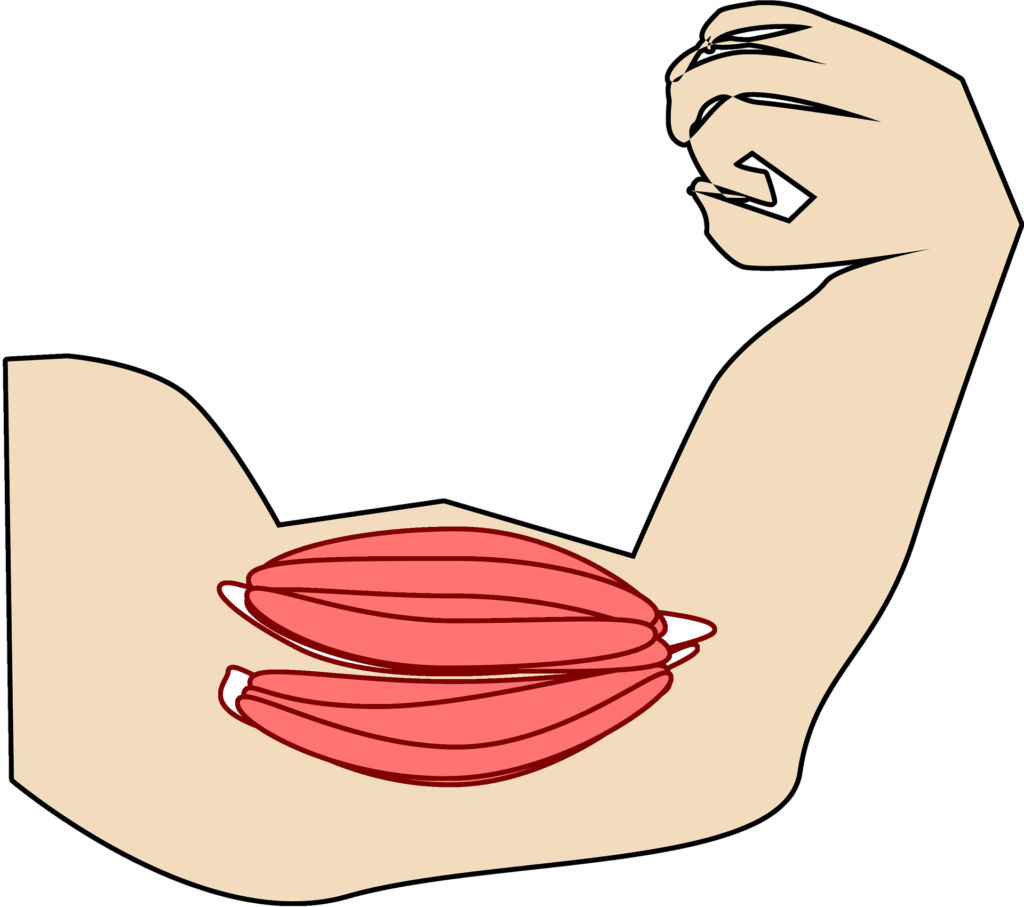The king of biceps exercises: the incline bench curl
The incline bench curl is often referred to by muscle-builders as the best exercise for biceps hypertrophy, and it's the one that covers virtually every anatomical type, according to the king of bodybuilding in France.
Lying on an inclined bench (head up), arms towards the ground with a dumbbell in each hand, you'll need to bend your elbows. This movement particularly stimulates the long head of the biceps brachii.
The exercise for the short portion of the biceps: the alternating seated curl, shoulder blades closed
Sitting on an upright bench, shoulder blades squeezed, with one hand rotated, and alternating, this unilateral exercise focuses on each biceps.
Starting position in hammer grip, the arm rotates outwards as the elbow flexes, then finishes in supinated grip, i.e. palm towards the shoulder. This version of the seated curl is designed to work the entire biceps brachii, not just the long side.
You can slightly raise the elbow at the end of the movement. The advantage of this exercise is that you can develop both the short and long sections, depending on your needs. the disciple of the king of bodybuilding in France.
This content is part of the guide Blooness, the guide to the ideal human diet, the summary of which you can find here 🌱🥑
The hammer curl
The hammer grip allows more targeted brachial and brachioradialis muscles (forearm muscle), to the detriment of the biceps. It's a complementary and essential exercise to include in your biceps session, to increase the volume of your arm for aesthetic reasons, and to avoid delaying the brachialis.
It can be performed standing, seated or on a desk, with standing or seated being best.
French-speaking subscribers will receive the newsletter in French, and all others will receive an English version.
Pronation curl for the forearms
Biceps exercises: beware of injuries
To avoid injury, and work intelligently, you need to put your ego aside and opt for weights that will work your biceps without cheating, and perform a movement devoid of any risk to tendons. The aim is to build muscle without trauma.
How to gauge your weights
First of all, you need to tame your body, and start with very light weights and a high number of repetitions and sets (5 sets of 20 repetitions) in order to fully understand the movement we're being asked to do, and which allows congestion.
Then, to start building volume, start with sets of 4, with approximately 8 to 15 repetitions.
Finally, it's a good idea from time to time, on a low-risk biceps exercise, to drastically increase the load and do 2 or 3 sets with 6 or 8 repetitions maximum. The aim here is to "shock the muscle" and work its nervous system, even if it means cheating a little.
For those who just want to slim down, and above all not gain muscle volume - I'm thinking mainly of women, but some men too - you need to take care to use very small weights, and work on long sets. But here too, short sets with moderate to heavy loads, from time to time, when your energy level is high, can be hyper-productive in terms of fat loss. All this, of course, combined with the Blooness diet, moderate in carbohydrates rich in healthy ingredients.
Pay attention to range of motion and inclination
When you work your biceps on an inclined surface, such as a desk, tension is created on the tendon, especially when you do a full range of motion.
That's why we strongly advise you to start with a reduced amplitude when supinating, especially if you're on an inclined surface, or to prefer exercises that can be done standing (without cheating by using your shoulders to move your back backwards), or seated.
The idea is to keep the biceps not too far forward, but perpendicular to the ground, to limit tension on the tendon.
Ideally, therefore, you should straighten the bench vertically, or work with elastics or pull-ups. The pull-up is the same movement as the seated curl described in exercise 2 of this article, with the famous rotation. Here's a full explanation of this movement:



